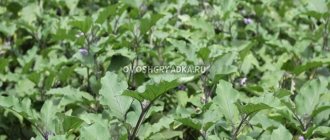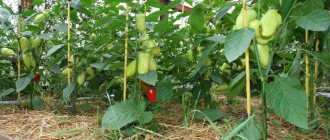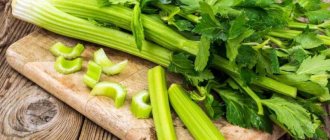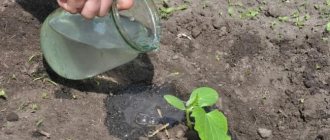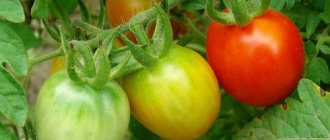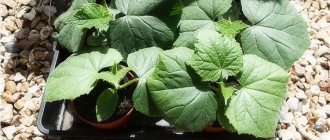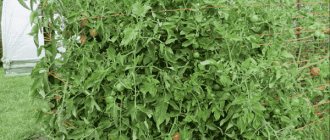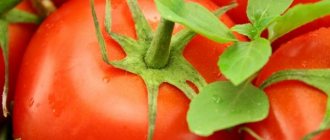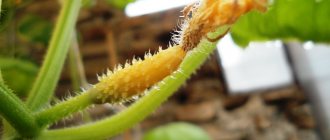General rules for growing eggplants
“Blue” vegetables are capricious and prefer a lot of sun and warmth. To grow a wonderful harvest of eggplants, it is preferable to plant them in a greenhouse. However, there are frost-resistant species, so you can grow eggplants in open ground (Black Opal, Almaz varieties).
Experienced gardeners advise starting planting directly from the greenhouse, alternating blue seedlings with tomatoes or cucumbers.
What every gardener needs to know:
- If the days turn out to be dry and hot, then the pinching operation is not performed.
- Pay attention to the bushes: when the leaves are persistent and the stems are thick, there are healthy stepsons, then there is no need to shoot stepsons.
- When about five fruits appear, the top of the plant must be pinched.
- The trunk at the bottom is free, young leaves and sprouts must be removed.
- Yellow leaves are also removed.
- When the fruits begin to ripen, make sure that they are not in the shade: the leaves that cover the fruits must be removed.
Do greenhouse peppers and eggplants grow?
If crops are grown in a greenhouse, it is highly recommended to plant them. It is difficult to control the exact temperature in a greenhouse. Typically, there is a high level of humidity and the surrounding air is very warm.
Such conditions are favorable for the growth of foliage and side shoots. A lot of them can develop. This can have an extremely negative impact on the development of fruits, their size and quantity.
To stop the growth of foliage and obtain bushes of the correct shape, you should perform pinching, removing unnecessary greenery and cutting off the top part.
Eggplants must be pinched before the buds appear.
The need to perform gartering and pinching
During the growing season, eggplant bushes can grow from thirty-five to one hundred and fifty centimeters in height. Depending on the type, they are small, medium-sized and tall. In greenhouses, eggplants form faster than in open soil.
With excellent care in open ground, plants grow densely covered with leaves, with a huge number of lateral shoots and stepsons. Often, eggplants darken each other, so the plant must necessarily remove excess shoots.
As long as there is an increase in green mass, the development and growth of fruits is delayed. They begin to ripen at a very late date.
If you remove the stepsons and leaves, this will not interfere with the plant - it continues to form. At the same time, ventilation of the root area and the bush itself will improve, therefore, the threat of plant damage by various diseases will decrease.
Low-growing types of eggplants, in which the growth of stepsons and leaves last a long time, do not require mandatory thinning.
Medium-sized and tall plants must be tied up so that they can successfully withstand the mass of filling and eggplants. Stakes are used as supports or plants are grown as a trellis crop.
Eggplants, which grow in size in the greenhouse, especially need garter. Here they have the most saturated and fragile stems, as a result of which they break more often.
Pinching is the removal of part of the leaves or lateral shoots of the eggplant. This process makes it possible to create an eggplant bush, secure it and get the largest fruits.
The need for pinching is determined by the fact that in a warm and humid environment, eggplants will create a very thick green mass with a huge number of lateral shoots.
As a result, the plant “throws” all its energy into the formation of foliage, but there are no resources left for the normal formation of fruits.
As a result, vegetables grow small, often deformed and with mediocre taste. Moreover, in some variants the ovaries simply do not have time to ripen and fall off.
When not to do it
Despite the recommended procedure for pinching eggplants, there are situations when this is not required. For example, when growing low-growing varieties, there is no need to worry about excessive thickening of plantings, since the bush will not form excess greenery.
You don’t have to worry about pinching when growing eggplants in open soil in large, light areas of the garden. In severe drought, the leaves of the plant will form a kind of shield that protects the substrate from excessive drying out. Moreover, in open space the leaf mass does not grow so quickly, so the bush will not be able to become overgrown.
Sometimes the procedure for planting eggplants is abandoned even when the stems of the crop look thick and persistent, with dense and healthy stepsons extending from them. All of them indicate a sufficient amount of nutrients inside the bush and no need for their redistribution.
Did you know? The most useful are the oblong eggplant fruits, blue-black in color with a shiny surface. Typically, such varieties have a limited number of seeds, which can be considered as an additional advantage of the plant.
Growing eggplants, diagram
An important circumstance in courting the “little blue ones” is considered to be stepsoning. This simple process involves eliminating unnecessary growths. It is especially advisable when the plant grows in a climate with excessive air humidity, in hot conditions.
Many experienced gardeners claim that you can grow great eggplants without pinching. Is it so?
This is quite possible when eggplants grow in a dry, hot climate. Then the leaf mass perfectly protects the soil under the plant from drying out and stores water. In other options, stepsoning is mandatory.
The procedure itself is performed within 14-20 days from the day the seedlings are planted in the soil. You can wait up to 20 days if the plants are weak and do not take root well, but for strong, well-established seedlings, 14-15 days from planting will be suitable, since it is necessary to meet the deadline and carry out pinching before the buds appear.
Recommendations
Despite the fact that stepsoning seems to be a very easy procedure, when carrying it out some nuances must be taken into account. For example, professionals recommend removing excess leaves, shoots and flowers only with your hands and not with pruning shears. This is due to the fact that this reduces the risk of introducing diseases, and due to the sensitivity of the hands, such an operation will be performed more accurately. If you cannot do without tools, then it is necessary to disinfect them in advance. Such little things can protect eggplants from many diseases.
It is advisable to carry out pinching after the bushes have been well tied up. Otherwise, plants with a large number of ovaries become too brittle and the stem may simply break.
It is not recommended to neglect pinching, because thanks to it the fruits receive the necessary amount of nutrients and develop normally. When bushes with fading foliage appear on the beds, this means that they are sick and it is better to get rid of them completely. If this is not done, then it will be possible to lose a much larger number of eggplants, since the disease will eventually spread to other plants.
The lower leaves must be removed. This simple procedure will make it easier to pick ripe fruits and make them look better. On such bushes, the fruits will grow faster and be less susceptible to various infections. This method can significantly increase the yield.
If eggplants are grown in a greenhouse with a dry microclimate, then it is better to leave the lower leaves. They will retain moisture in the soil directly near the stems, and it will not dry out. However, it is necessary to monitor and remove leaves, as well as ovaries that have dried out or become deformed. Their appearance may indicate serious diseases of eggplants.
Read on to learn how to care for eggplants.
Formation into one stem
This forming method is more suitable for use in greenhouses if there is a lack of space, and also for extracting large fruits. Experienced gardeners operate according to the following scheme:
- When the plant grows to 30 cm, all leaves and stepsons up to the fork are removed, one leaf is retained to feed 1 ovary.
- Among 2 or 3 stems in a branch, the strongest one is selected, the others are removed.
- Pruning and removal of unnecessary leaves is carried out every 7 days.
- The leaf near the 1st ovary is removed after its intensive enlargement begins (after 5-7 days).
- A month before the arrival of frost, the top and flowers are removed, and in addition, small ovaries, they will not have time to ripen and will interfere with the ripening of large fruits.
This method of formation is also used for plants with a weak, thin stem; it will not be able to bear the weight of the fruit in a branched trunk.
In addition to excess shoots, leaves and flowers, do not forget to remove dried corollas from the growing ovary, which, under conditions of high moisture in the greenhouse, become a factor of rotting.
Common errors when forming
- Eggplant plants can be grown without shaping. In open ground and when cultivating low-growing varieties, yes. This is exactly what happens in farmers' fields, where crops grow without unnecessary human intervention. But, when growing eggplants in a greenhouse, as well as choosing medium-sized and tall varieties, shaping is necessary. It allows you to switch the plant to earlier and more friendly fruiting. As a result, the gardener will receive a good harvest in the fall.
- Using a single forming scheme for all plants. Eggplant bushes grow and develop in different ways. That’s why they require an individual approach. If you form them according to the same scheme, crop losses are inevitable. It is better to focus on the condition of each bush separately.
- Incorrect leaf cutting and pinching. Removal of unnecessary shoots should be done regularly. They must not be allowed to outgrow. This takes away nutrition from the fruits and delays their ripening. The only exceptions are early ripening varieties. As for the leaves, gardeners often either do not remove them at all or cut off too many. It is imperative to remove old yellowed leaves (the eggplant no longer needs them) and all the green mass on the trunk up to the fork. If it is too hot and dry, you can leave 2-3 bottom leaves to conserve moisture in the root area. You shouldn’t cut off too many eggplant leaves – they are needed for photosynthesis.
- Early pinching of the tops of eggplants. Throughout the warm season, eggplant is able to grow and bear fruit. At the same time, the number of ovaries only increases towards the top. If you remove it ahead of time, you can get an early harvest, but it will be small. Eggplants need to be pinched 2-4 weeks before the end of the growing season, and to ensure that the top fruits do not remain small, it is necessary to collect ripe specimens on time. While they hang on the bush, the rest will not grow.
Sources:
https://fermoved.ru/baklazhan/pasynkovat-v-teplice.html https://plodovie.ru/ovoshhevodstvo/baklazhan/pasynkovanie-uhod-za-baklazhanami-v-teplitse-15771/ https://ogorodgid.ru /baklazhan/kak-formirovat-baklazhany
How is a bush formed into 2 stems?
Formation into 2, 3 or even 4 stems is up to the gardener to decide. This depends on the density of plantings, the height of the plant, and the quality of the variety. Gardeners advise leaving 2 stems, this guarantees greater yields when the plant fully devotes all its strength.
Vegetable growers perform pinching into 2 stems in the following order:
- When the plant reaches a height of 30 cm, the growing point is removed.
- Among the lateral processes that began to rapidly increase, 2-5 of the strongest ones are retained, others are removed with pruning shears.
- In parallel with these manipulations, all processes below 1 ovary are regularly removed, and additional ovaries are removed and eliminated in each remaining process.
- To obtain the largest fruits, it is recommended to leave no more than 5-6 ovaries on the plant; with normal formation, up to 20 are retained;
- Regularly, as the fruit grows, unnecessary and unhealthy leaves are removed;
- If the seedlings are weak, it is recommended to postpone the largest number of shoots.
- To protect the soil from drying out in dry weather, it is recommended to leave the lower leaves and shoots.
Rules
Properly formed eggplant bushes produce significantly larger yields. Yes, and the fruits from such plants have better taste. In fact, in order for the bushes to have optimal density in terms of foliage and shoots, you just need to understand that flowers need a lot of sunlight, watering and fertilizing. In order for all this to reach the plant in sufficient quantities, a pinching procedure is necessary.
Of course, you can grow an eggplant crop without it, but you should understand that the ovary will be quite poor and may fall off partially or even completely. Fruits that ripen on unformed bushes are most often deformed and small in size. Therefore, pinching is mandatory for medium and tall eggplant varieties.
It is best to pick stepsons in the morning. This is necessary so that the damaged areas are restored by the evening. The procedure should be carried out when the bushes have already taken root a little (at least 2 weeks) in the open ground. Stepping is carried out according to several schemes.
- In one stem. This scheme is used if the plants are weak or tall. It is also better to resort to it if there is little space for growing eggplants and it needs to be distributed as economically as possible. This solution allows the bushes to develop better and produce higher yields. If only one stem remains, then it must be regularly inspected and excess or too small ovaries must be removed. After the formation procedure, tall bushes must be tied to supports so that they do not break off.
- In two stems. This scheme can be used for healthy bushes. Its implementation begins with pinching the top of the main stem. After this, the plant begins to quickly send out side shoots. Of these, only the two best should be selected and retained, and all the rest should be removed. If new shoots appear, they also need to be removed.
- Three or more stems. The scheme implies that you can leave from three to five shoots. Of course, this option is only appropriate if the bushes are large and completely healthy. There should also be enough space for each plant to avoid excessive shading. In this case, when pinching, you need to leave the two strongest shoots and remove all the others. Then a strong stepson should be left on one of the shoots.
The stems to be removed must be selected so that the remaining ones do not intertwine or shade each other. Otherwise, the eggplants will grow very slowly.
The choice of which particular procedure will be carried out is made based on the variety, growing location (open ground or greenhouse), climate and other factors. For greenhouses, it is advisable to form plants according to a pattern of two or three stems, but for open ground, much depends on the variety and weather conditions.
Pinching is also an important stage in the formation of an eggplant bush. It should be carried out when the height of the plant is about 30 centimeters. This procedure involves removing the topmost flower on the stem. This is done so that the bush has more side shoots and grows in breadth.
After active branching occurs, the formation of skeletal branches should begin. This is done in the following way: the strongest flower is selected on the branch, which will be the main one, and the other one must be pinched after the second leaf. This way you will only get one eggplant per branch. Do the same with all branches. As a result, the bush will produce from 5 to 12 fruits.
It is advisable to tie them to a support after forming the skeletal branches. This must be done with extreme caution so as not to injure the bushes, because they are very tender and brittle. You need to be especially careful when handling tall bushes, as they have a very high load during the ripening period of eggplants. As a result, the plants become even more fragile and are easily damaged.
The garter is carried out as follows: a wire is fixed above the tops of the plants, and a rope is already attached to it. Then a garter is made under each branch of the plant.
In the future, eggplants also need attention. They must be periodically inspected and shoots that lack an ovary must be removed. Of course, this can lead to the ground under the bushes drying out in extreme heat. This problem can be solved by mulching the soil under the eggplants.
30-35 days before the end of the growing season, the tops of all shoots should be pinched. This procedure will allow them to stop growing and the bushes will be able to put most of their energy directly into ripening the fruits.
Pruning is an important procedure that is necessary for the plant throughout its life. However, care must be taken not to overdo it so that the plant does not get sick and die.
What does a gardener need to know?
Pinching is not the most difficult procedure in gardening. However, to achieve excellent results, you need to understand the following about how to plant eggplants:
- Do not use scissors when working; work exclusively with your own hands. When you do use a garden tool, be sure to disinfect it before cutting, otherwise there is a risk of infection in the wound on the stem.
- A consequence of the previous paragraph will be a mandatory procedure for disinfecting both hands and equipment after working with each of the bushes. This is done so that in the event that one plant is affected by a disease, this infection is not spread to others.
- Did you see that the plant was sick or suddenly went limp? In this case, bypass it with the stepsoning procedure - it will weaken even more. You switch to forming a bush only when the bush is completely renewed.
- If the climate in the greenhouse is quite dry, then there is no need to remove the lower leaves - they can help retain water in the substrate.
- Deformed leaves and ovaries should be eliminated without regret - this may be an indicator of the formation of a disease in the plant.
- If you are a supporter of organic fertilizers, then try not to overdo it with eggplants - the bush responds to such fertilizing with the vigorous growth of additional stems and leaves, and only then with the development of ovaries.
- If you see that you have overdone it with the pinching of the lower leaves, then the soil around the plant should be mulched so that the mulch now protects it from drying out.
Follow the link to watch a video on how to pick eggplants:
When to start the procedure
Most often, the first removal of excess shoots on eggplants is carried out 3-4 weeks after planting the seedlings in a permanent place of growth. By this time, strong roots should have formed on the plants, and it will already have time to take root in the new environmental conditions.
At the same time, we are not talking about active growth yet, so any intervention at this stage will not be so traumatic. As for the specific time for performing the procedure, it is better that it be a dry day without precipitation, since high humidity or other unfavorable factors can provoke the development of infection in the cut areas.
In addition, when planning the procedure, it is worth moving it to the morning hours so that by the cold evening the wound has time to heal well.
The main mistakes when growing eggplants in a greenhouse
When growing and planting eggplant, inexperienced gardeners often make certain mistakes:
- the lack of tying and removing additional leaves becomes a factor in the plants shading each other and reducing the quality of light;
- tying of plants must be done directly near the branches, where the most fragile stem part is located;
- It is not recommended to create eggplant bushes in too dry weather or in the rain, since in this case the destruction of the plant by diseases through damaged areas is often observed;
- It is preferable to carry out pinching of eggplant in the early morning, which will give the plant the opportunity to renew itself before nightfall;
- After pinching in open ground, plants may need shading from hot sunlight.
https://sornyakov.net/vegetables/nuzhno-li-pasynkovat.html
Necessity of the procedure
It should be said right away that pinching is not a prerequisite for obtaining a good eggplant harvest. Plants may not need this procedure in two cases:
- if they are grown in open ground, in this case the leaves are left so that they prevent the soil from drying out in hot weather; moreover, under the scorching sun, the bushes do not grow very intensively;
- if the eggplant variety is low-growing, the bushes of such eggplants, as a rule, are able to form independently.
Preliminary work
Before pinching, you need to take care of tying up the bushes, since with a large number of ovaries, as the weight of the fruit increases, the stem may bend. To tie, as a rule, a wire is stretched over the bushes along the entire row, and twine or a thin rope is tied to it. Sometimes a trellis is used for the same purposes, but in any case it should be remembered that this must be done carefully so as not to damage the stem. It is optimal to make a garter under each branch of the stem, since this place is the most vulnerable on the bush.
If there are no trellises, you can get by with simple pegs. However, it is important to remember that the height of the stake should exceed the height of the plant. In addition, this method of tying is considered not very convenient, since the shadow from the peg contributes to the occurrence of rot.
Working with Skeletal Branches
Those shoots that you left - one, two or several - are called skeletal branches. They also cannot be ignored. How to further plant eggplants?
In addition to removing branches and leaves that reappear at the bottom of the bush, you need to identify only one most actively developing fruit at each branch. All others are pinched after the second leaf above the ovary. This must be done with each branch. This work will help the formation of 5-12 large, full-fledged fruits on each bush.
